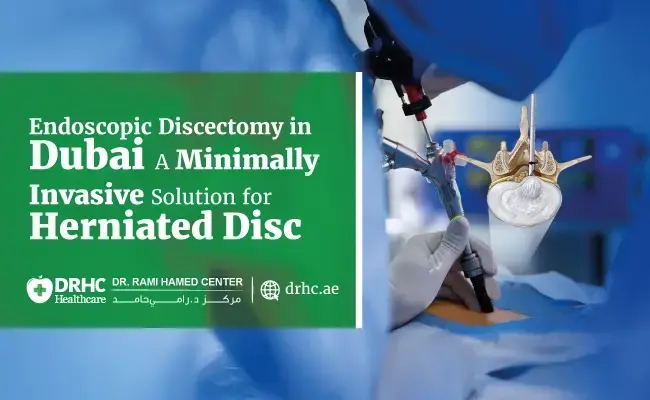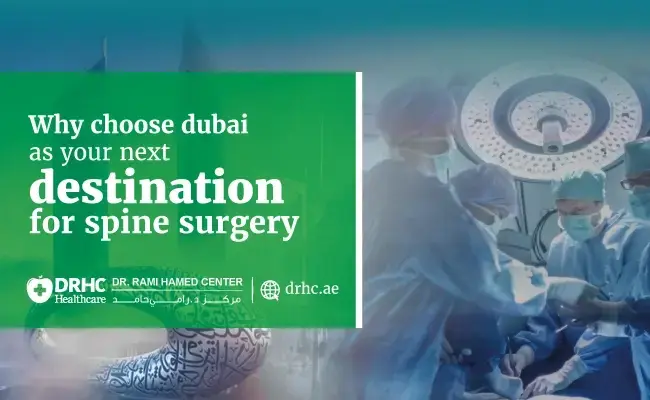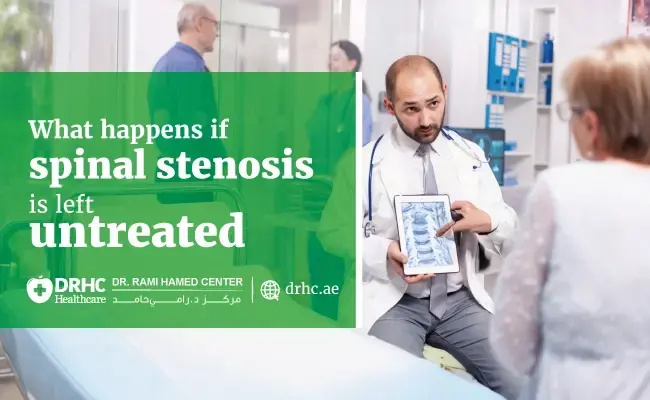
Your knees do a lot of heavy lifting—whether you're walking, climbing stairs, playing sports, or simply going about your daily routine. So when knee pain strikes, especially following a twist or injury, it can feel worrying and frustrating. One of the most common causes of knee pain is a meniscus tear, and understanding the type of tear you have is an important step toward effective treatment and healing.
At Dr. Rami Hamed Center (DRHC) in Dubai, we’re here to help you make sense of your diagnosis in a clear, reassuring way—so you can move forward with confidence.
What Is the Meniscus?
The meniscus is a crescent-shaped piece of cartilage in your knee that acts as a cushion between the thigh bone (femur) and shin bone (tibia). Each knee has two menisci—medial (inner) and lateral (outer)—which help absorb shock, stabilize the joint, and support smooth movement.
A tear in the meniscus can happen suddenly from a twist or impact—common in sports—or develop gradually due to wear and tear with age.
Why Knowing the Type of Meniscus Tear Matters
Not all meniscus tears are the same. The type, size, and location of the tear affect your symptoms, the treatment plan, and whether surgery may be needed. Some tears can heal on their own with rest and therapy, while others may require arthroscopic repair.
Here’s a closer look at the most common types of meniscus tears, and what they mean for your recovery.
1. Longitudinal (Vertical) Tear
This is one of the most common types, especially in younger or athletic individuals. It appears as a vertical slit along the length of the meniscus.
- Often seen in the medial meniscus
- May be repairable if located in the outer (vascular) zone
- May cause locking or catching in the knee
Good to know: This type often responds well to surgical repair because the outer portion of the meniscus has a good blood supply, which aids healing.
2. Radial Tear
This type starts at the inner edge of the meniscus and extends outward like the spoke of a wheel.
- Often difficult to heal without surgery
- Located in the inner, avascular part (limited blood flow)
- This may lead to instability and loss of cushioning
Treatment tip: Radial tears may require a partial meniscectomy (removal of the torn part) or repair depending on the extent.
3. Horizontal Tear
This tear runs parallel to the tibial plateau, dividing the meniscus into top and bottom portions.
- More common in older adults
- May be associated with meniscal cysts
- May cause swelling and discomfort with movement
Depending on the tear’s location, your orthopedic surgeon may recommend repair or trimming of the damaged tissue.
4. Complex Tear
This involves a combination of tear patterns (e.g., radial and horizontal) and is often the result of degenerative changes.
- Common in middle-aged and older adults
- Harder to repair
- May require personalized treatment, including trimming or partial removal
These tears often come with a history of knee stiffness and recurring pain rather than a single injury event.
5. Bucket-Handle Tear
A severe type of longitudinal tear where a portion of the meniscus displaces into the joint, resembling a handle.
- Can cause the knee to lock or lose full extension
- Often seen in athletes
- Usually requires urgent surgical repair
This type of tear can significantly limit movement and should be addressed promptly to avoid long-term knee damage.
6. Flap Tear
This is a small, loose piece of cartilage that flips up and causes discomfort.
- May cause catching or clicking sensations
- Often treated by trimming the loose flap during arthroscopy
Although smaller, flap tears can still affect comfort and mobility if not addressed.
Our Related Blogs:
- Sharp Knee Pain When Walking? Loose Cartilage Might Be the Cause
- Grinding Sensation in Your Knee? Cartilage Damage May Need Arthroscopy
- Painful Kneecap? Patellar Misalignment Can Be Treated with Arthroscopy
- Chronic Knee Pain Despite Rest? Arthroscopy Can Diagnose & Treat the issue
- Stiff Knee After Injury? Scar Tissue Might Require Arthroscopic Cleanup
- Can't Squat Without Pain? Meniscus Tears Often Respond Well to Arthroscopy
- What Is a Meniscus Tear? Causes, Symptoms, and Treatment Options
Common Questions from Patients
“How do I know which type of meniscus tear I have?”
A combination of physical examination and MRI imaging helps determine the tear’s type and severity. Our orthopedic specialists at DRHC Dubai use advanced diagnostics to tailor your treatment plan.
“Is surgery always necessary?”
Not always. Many small or stable tears can heal with rest, physiotherapy, and activity modification. Surgery is usually considered when:
- The tear causes knee locking or instability
- Conservative treatment has failed
- The tear is in a zone with poor healing potential
“How long does recovery take?”
Recovery varies based on the tear and treatment:
- Non-surgical: 4–6 weeks
- Arthroscopic repair: 3–6 months, depending on healing
- Meniscectomy (partial removal): 4–6 weeks
A rehabilitation program guided by your doctor or physiotherapist is key to regaining strength and mobility.
Treatment for Meniscus Tears at DRHC Dubai
At DRHC Dubai, our orthopedic team offers comprehensive care for meniscus injuries—from precise diagnosis to conservative management and minimally invasive arthroscopic surgery, if needed. We work closely with each patient to explain options clearly and support a full recovery.
Our focus is not only on healing the knee but also on helping you return to your everyday activities safely and confidently.
A Final Word of Reassurance
Knee injuries can feel limiting, especially if you're unsure what comes next. But understanding the type of meniscus tear you have puts you one step closer to healing. Whether your treatment involves rest, rehabilitation, or surgery, you're not alone—we’re here to help every step of the way.
If you're experiencing knee pain or have been diagnosed with a meniscus tear, we invite you to schedule a consultation at Dr. Rami Hamed Center in Dubai. Let’s find the right treatment together, and get you back on your feet—stronger than before.
Call +97142798200 us now to schedule your consultation today!
Visit our Spine Center at DRHC Dubai – Located in Dubai Healthcare City
Topic: orthopedic Knee




.jpg)




Leave a comment